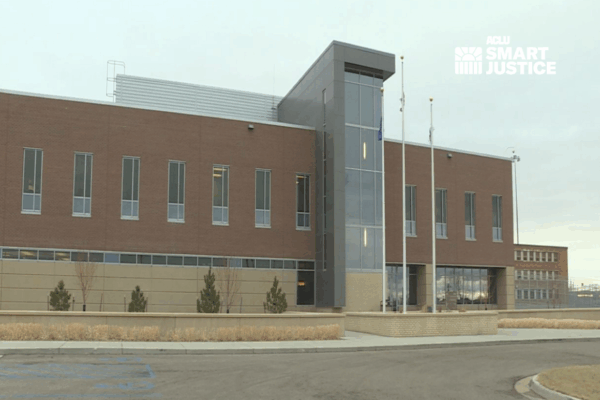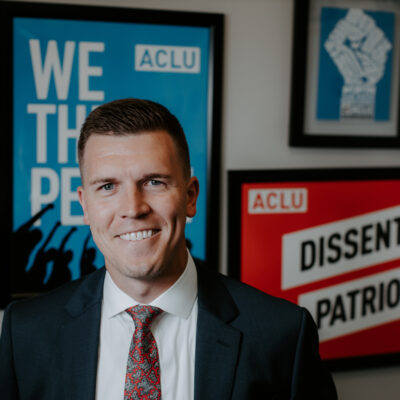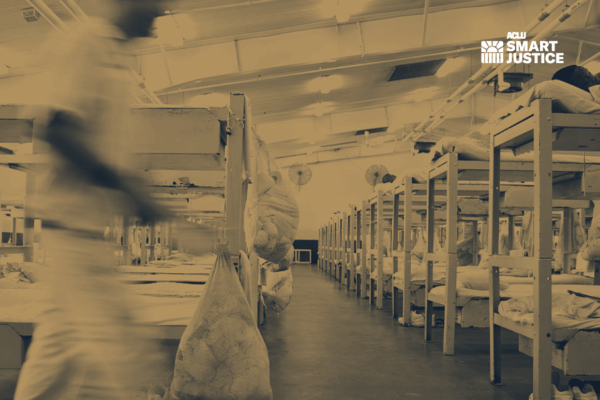Over the past five decades, the United States has dramatically increased its reliance on the criminal justice system as a way to respond to drug addiction, mental illness, poverty, and broken schools. As a result, the United States today incarcerates more people, both in absolute numbers and per capita, than any other nation in the world. Millions of lives have been upended and families torn apart. The mass incarceration crisis has transformed American society, damaged families and communities, and wasted trillions of taxpayer dollars.
It’s no different in North Dakota. Here, the state imprisonment rate jumped by 52 percent between 2000 and 2016. As of the end of 2018, there were 1,695 people in prison in the state overall. All this incarceration is expensive. In 2017 alone, North Dakota spent $102 million of its general fund on corrections.
We all want to live in safe and healthy communities, and our criminal justice policies should be focused on the most effective approaches to achieving that goal. But the current system has failed us. It’s time for North Dakota to dramatically reduce its reliance on incarceration and invest instead in alternatives to prison, including approaches better designed to break the cycle of crime and recidivism by helping people rebuild their lives.
The ACLU’s Campaign for Smart Justice is committed to transforming our nation’s criminal justice system and building a new vision of safety and justice. The Campaign is dedicated to cutting the nation’s incarcerated population in half and combating racial disparities in the criminal justice system.
To advance these goals, the Campaign partnered with the Urban Institute, a nonprofit research organization, to conduct a two-year research project to analyze the kinds of changes needed to cut the number of people in prison in each state by half and reduce racial disparities in incarceration. In every state, Urban Institute researchers identified primary drivers of incarceration. They then predicted the impact of reducing prison admissions and length of stay on state prison populations, state budgets, and the racial disparity of those imprisoned.
The results were eye-opening.
In every state, we found that reducing the prison population by itself does little to diminish racial disparities in incarceration and in some cases would worsen them. In North Dakota — where the Native American adult imprisonment rate was six times as high as the white adult imprisonment rate in 2017 — reducing the number of people imprisoned will not on its own reduce racial disparities within the prison system. These findings confirm for the Campaign that urgent work remains for advocates, policymakers, and communities across the nation to focus on efforts like policing and prosecutorial reform that are specific to combating these disparities.
To their credit, North Dakota policymakers have made some efforts to address their prison population in recent years, passing reforms in April 2017 and taking steps to reduce penalties for marijuana possession in 2019.
Still, sentences for drug and alcohol offenses are a significant contributor to the state’s prison population, and admissions to the state’s prisons for such offenses rose 79 percent between 2008 and 2018. By 2018, nearly half (45 percent) of admissions into the state’s prisons were for such offenses. Another key driver of prison admission is revocation from community supervision such as probation. In 2014, such violations constituted 38 percent of all admissions to prison. That year, 45 percent of probation violations were due to noncompliance with supervision provisions, rather than a new crime.
North Dakota’s “Truth-in-Sentencing” laws can also make it hard for people to earn good time off their sentences, and people imprisoned for certain violent offenses must serve 85 percent of their sentence before becoming eligible for parole. Mandatory minimums for certain offenses, including some drug offenses, also play a role in long prison stays.
Like most states, North Dakota’s mass incarceration crisis has had a particularly severe impact on people of color. In 2017, Native Americans accounted for 4 percent of all adults in the state, yet they comprised 19 percent of its prison population. That same year, the Black adult imprisonment rate was nearly five times as high as the white adult imprisonment rate. Women are also heavily impacted — between 2008 and 2018, the number of women in North Dakota prisons increased by 23 percent, while the number of men increased by only 14 percent. And seven out of 10 women serving time in North Dakota prisons were there for nonviolent offenses, the most common category of which was drug related offenses.
So, what’s the path forward?
Alternatives to incarceration that put people into mental health and addiction treatment when they could benefit from help rather than prison or jail should be a priority for the criminal legal system in North Dakota. And reforming probation and parole practices would ensure that revocations — particularly for technical violations — do not account for such a high proportion of prison admissions. The North Dakota legislature could also decriminalize marijuana possession, instead treating it as a public health issue. This would reduce recidivism, increase public safety, and save the government money.
In addition, reforming parole practices and time served requirements so that the state’s Truth-in-Sentencing laws do not require excessively long stays in prison would lower the incarcerated population. And reducing sentencing ranges for drug offenses, burglary and property offenses, robbery, public order offenses, and assault would ensure that the amount of time people spend in prison is not disproportionately long.
For more detailed information about these and other potential reforms, see the sections on “Reducing Admissions” and “Reducing Time Served.” If North Dakota were to adopt these and other changes, the state could have 1,015 fewer people in prison by 2025, leading to a total cost savings of more than $125 million.
Ultimately, the answer is up to North Dakota’s voters, policymakers, communities, and criminal justice advocates as they move forward with the urgent work of ending the country’s obsession with mass incarceration.





